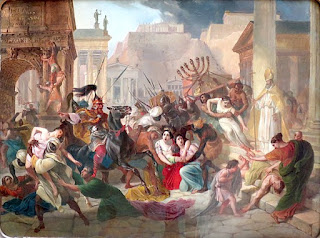Stone slabs dated to 1067 - 1046BCE in Babylon describe "falling sickness" caused by demons and ghosts. A 600BCE Persian text on health, the Avesta, mentions Zoroaster's advice to use sacrifices to prevent convulsions. Chinese health systems in 770BCE described acupuncture as a treatment.
It was the Greeks who coined the term "epilepsy" ("to seize" or "to attack") because they thought it was an attack from a god or demon. A Hippocratic collection of manuscripts called "The Sacred Disease" actually hit the target:
I am about to discuss the disease called “sacred”. It is not, in my opinion, any more divine or more sacred than any other diseases, but has a natural cause … Its origin, like that of other diseases, lies in heredity … the fact is that the cause of this affection … is the brain …
The cause he identified was an excess of phlegm in the blood. Plato agreed, but Aristotle believed it was vapors from certain foods that went into the brain during sleep. (The idea that epilepsy was a disorder of the brain would not be explored medically until the 1700s CE.)
Seizures in Medieval Europe were usually attributed to demonic possession, requiring exorcism and religious rituals. They drew this conclusion logically from Jesus curing a boy from seizures in Mark 9:14-16. It was also thought in England that the king had healing powers, even over epilepsy. Part of this cure was the handing out of rings.
These rings were called "cramp rings" because they were a preventive against cramp and epilepsy. Legend has it that the first cramp ring came from Jerusalem and was given by a pilgrim to Edward the Confessor. It was supposed to have miraculous healing powers. After Edward's death, it was given to the abbot of Westminster, who used it to try to cure people. It became known as St. Edward's Ring. Eventually this led to a Good Friday practice of the heirs of Edward blessing a number of gold or silver rings that would be handed out to prevent epilepsy. This ritual survived until the reign of Queen Mary I (1553 - 1558).
Cramp rings were not the only magical metals or magical charms in the Middle Ages. Tomorrow we'll have a brief exploration of more.























